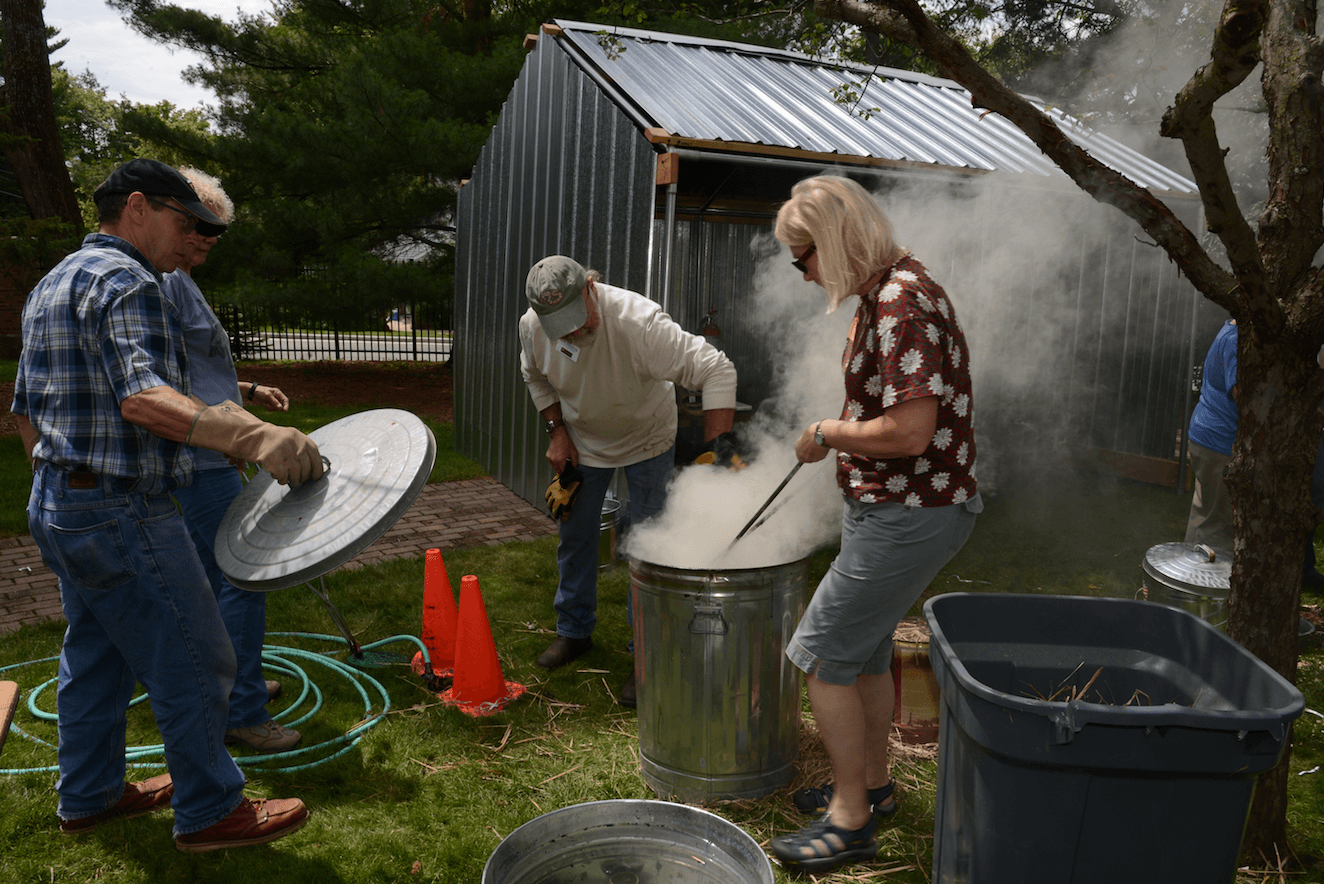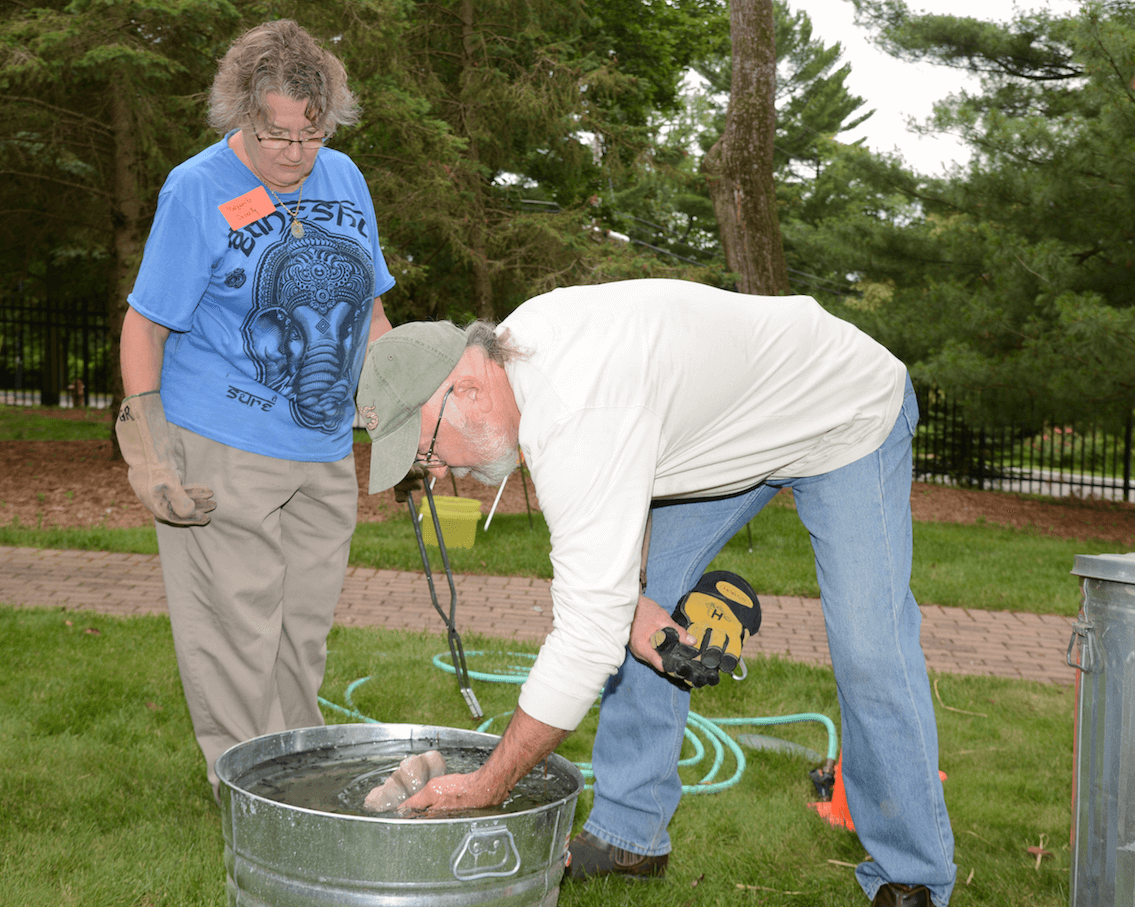
Yukiya Izumita, “Sekiosh Vase,” 2012, stoneware, photo courtesy of Ken Kondo; from the Collection of Gordon Brodfuehrer
Like many people, I learn best by doing. For years, my knowledge of ceramics was minimal and I hadn’t really considered pottery since I was a pre-teen taking classes at Chicago’s Lill Street Art Center. That all changed about six months ago when I revisited ceramics in preparation for the Woodson Art Museum’s summer exhibition, Nature, Tradition & Innovation: Contemporary Japanese Ceramics, on view through August 27.
I read the catalogue, learned from curator Meher MacArthur’s audio tour app recordings, and gained additional insights with the help of online videos on exhibition artists (check out this excellent video on Yukiya Izumita), but my head was still spinning like a pottery wheel with all kinds of new terms and techniques to digest.
Terms such as…
Bisque fire: first firing for ceramics performed at a lower temperature, prior to glazing, which make pots less fragile prior to final firing.
Greenware: Unfired pottery, ready to be bisque fired.
Kiln furniture: shelves and posts used in the kiln firing chamber to enable loading pieces on more than one level.
Leather hard: the slightly damp, but stiffened stage in drying clay.
Raku firing: a process by which pottery is fired at a relatively low temperature and then moved while hot to a closed container with combustible materials (such as paper or sawdust) that ignite and cause a reaction, creating colors and patterns in the pottery’s surface.
Pit firing: believed to be the oldest ceramic-firing technique, used worldwide for thousands of years before the invention of the kiln. Fire and smoke – caused by smoldering “fuel,” such as wood shavings, leaves, or grasses – create striking surface effects.
Lucky for me, the programs complementing the summer exhibition offered ample opportunities to familiarize myself with ceramic techniques by experiencing them firsthand. A teen/adult raku workshop with guest artist Gene Reineking and this week’s summer art sessions have kept Museum staff busy with ceramic studio preparations and test firings to ensure the success of our programs.

Dave’s electric Paragon kiln, which he purchased on Craigslist, worked like a charm; it was loaded and unloaded with ceramics for bisque firings earlier this month.
Museum facilities manager Dave Jones offered up his electric kiln, which was used to bisque fire multiple loads of greenware ceramics created by participants in session one of the “Raku with Reineking” workshop.
During session two, on Saturday, July 8, workshop participants glazed their ceramics in preparation for a full day of raku firing using Gene Reineking’s gas-powered raku kiln.

Gene Reineking monitors his raku kiln, waiting for ceramics inside to glow red hot when they reach about 1800° Fahrenheit.

Dave and Gene unload raku ceramics from the kiln using tongs to transport pottery to a combustion chamber.

Participants carefully place red-hot ceramics into a combustion chamber filled with straw, which ignites and smolders for about twenty minutes.

Ceramics are removed from the combustion chamber and quenched with water to cool.

Shannon, Dave, and I tested our version of the pit-firing process earlier this summer by igniting a combination of paper, wood chips, and sawdust in a metal garbage can.

Pit firing, much like raku firing is exciting (read: bright flames and billowing smoke) for about ten minutes out of the many hours of kiln sitting. Despite the fleeting entertainment value, we’re looking forward to pit firing the summer art session ceramics and seeing participants’ results.
My fun with fire isn’t over yet. Woodson Art Museum creative consultant Shannon Pueschner and I soon will be pit firing white-earthenware ceramics created by summer art session participants.

To learn more about pit firing and admire the summer art session ceramics, join us for the pottery unveiling on Thursday, August 3, 5:30-6:30 pm during Art 101.




